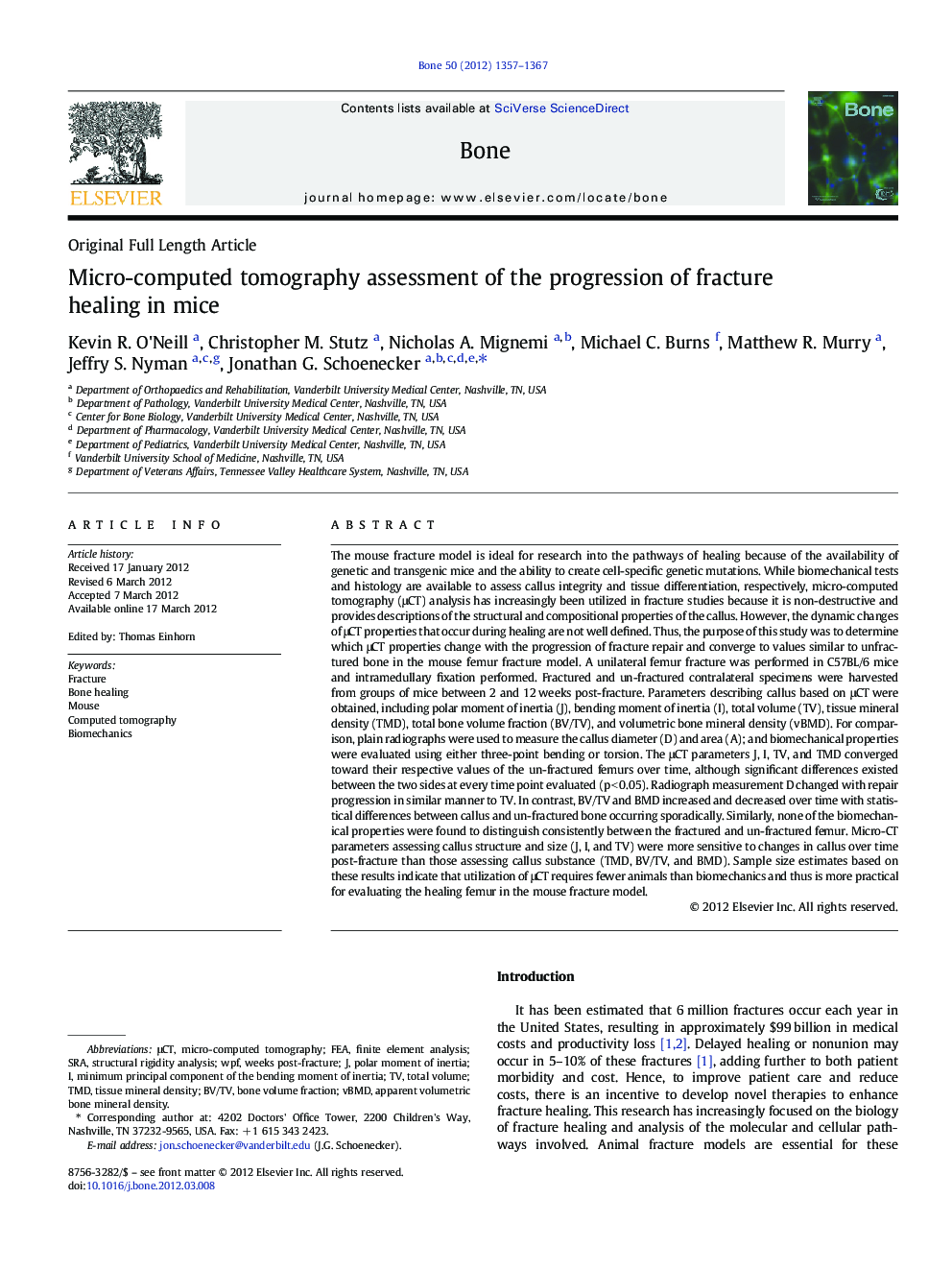| کد مقاله | کد نشریه | سال انتشار | مقاله انگلیسی | نسخه تمام متن |
|---|---|---|---|---|
| 5891299 | 1568162 | 2012 | 11 صفحه PDF | دانلود رایگان |

The mouse fracture model is ideal for research into the pathways of healing because of the availability of genetic and transgenic mice and the ability to create cell-specific genetic mutations. While biomechanical tests and histology are available to assess callus integrity and tissue differentiation, respectively, micro-computed tomography (μCT) analysis has increasingly been utilized in fracture studies because it is non-destructive and provides descriptions of the structural and compositional properties of the callus. However, the dynamic changes of μCT properties that occur during healing are not well defined. Thus, the purpose of this study was to determine which μCT properties change with the progression of fracture repair and converge to values similar to unfractured bone in the mouse femur fracture model. A unilateral femur fracture was performed in C57BL/6 mice and intramedullary fixation performed. Fractured and un-fractured contralateral specimens were harvested from groups of mice between 2 and 12 weeks post-fracture. Parameters describing callus based on μCT were obtained, including polar moment of inertia (J), bending moment of inertia (I), total volume (TV), tissue mineral density (TMD), total bone volume fraction (BV/TV), and volumetric bone mineral density (vBMD). For comparison, plain radiographs were used to measure the callus diameter (D) and area (A); and biomechanical properties were evaluated using either three-point bending or torsion. The μCT parameters J, I, TV, and TMD converged toward their respective values of the un-fractured femurs over time, although significant differences existed between the two sides at every time point evaluated (p < 0.05). Radiograph measurement D changed with repair progression in similar manner to TV. In contrast, BV/TV and BMD increased and decreased over time with statistical differences between callus and un-fractured bone occurring sporadically. Similarly, none of the biomechanical properties were found to distinguish consistently between the fractured and un-fractured femur. Micro-CT parameters assessing callus structure and size (J, I, and TV) were more sensitive to changes in callus over time post-fracture than those assessing callus substance (TMD, BV/TV, and BMD). Sample size estimates based on these results indicate that utilization of μCT requires fewer animals than biomechanics and thus is more practical for evaluating the healing femur in the mouse fracture model.
⺠Mouse femur fracture healing described using CT, radiographs, and biomechanics. ⺠CT-derived assessment of callus size and structure more sensitive to changes. ⺠Biomechanics did not detect differences in callus strength and had high variance. ⺠CT allows few animals to be used for adequate power compared to biomechanics. ⺠Comprehensive description of normal healing provides valuable reference.
Journal: Bone - Volume 50, Issue 6, June 2012, Pages 1357-1367